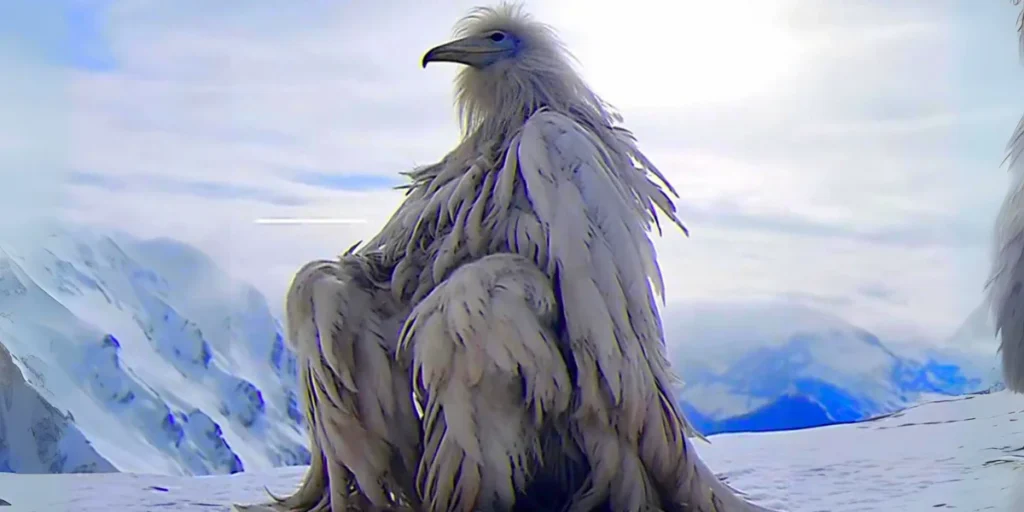The Opium Bird: Myths, Legends, and Realities
The term “Opium Bird” may sound mysterious or exotic, sparking curiosity about whether such a bird exists. Is it real or just a legend? Is it connected to opium in some way? This article will explore the concept of the “Opium Bird,” unraveling any myths, legends, and possible truths behind it. We’ll also delve into which birds might be linked to this mysterious term and whether it’s based on any actual facts. Let’s discover the story behind the “Opium Bird” together.
What is the Opium Bird?
The name “Opium Bird” may sound like a special bird connected to the world of opium poppies. Opium is a substance derived from the poppy plant, widely grown in some parts of the world. It has been used for centuries in medicine and sometimes for its intoxicating properties.
While the term “Opium Bird” is intriguing, there is no official or scientific bird species known by this name. It seems to be more of a nickname or a story people tell. Some people may think that a bird like this has a direct relationship with opium, like eating the seeds or being attracted to the opium fields, but this is not true. The “Opium Bird” is more of a legend or myth that may have been created over time.
Is the Opium Bird Real or Fake?
To put it simply, the “Opium Bird” is not real as a specific bird species. It is not listed in any scientific bird guides or ornithological (bird study) books. The name “Opium Bird” seems to be more of a local nickname or a description for certain birds that live near poppy fields, where opium is harvested.
The term might have emerged because people living in these regions found some birds flying around the fields of opium poppies. They might have thought these birds had a special connection to the plants, and so they began calling them “Opium Birds.” However, this is based more on stories and local beliefs rather than on any real, scientific connection between the birds and the opium poppy plant.
Myths and Stories Around the Opium Bird
In many cultures, especially in regions where opium poppies are grown, there are tales about birds and how they interact with these fields. These stories often add mystery and intrigue to the idea of the “Opium Bird.” Some common myths or beliefs include:
Birds Eating Poppy Seeds
It is believed that some birds feed on the seeds of opium poppies. However, these seeds are not the narcotic part of the plant. They are harmless to the birds, so they do not get “high” or intoxicated from eating the seeds.
Birds Being Attracted to Poppy Fields
Poppy fields can be beautiful, with their bright and colorful flowers. Birds might be attracted to these fields not because of the opium itself, but because the fields provide food, shelter, and a safe place to nest. Some people may have noticed these birds flying around the fields and started calling them “Opium Birds.”
Birds Affected by Opium
One interesting myth is that birds become “drunk” or act strange after feeding in poppy fields. This is more of a story than a reality since there is no solid evidence to prove that birds are affected by the opium poppy in this way.

Birds Associated with Opium Regions
While the “Opium Bird” is not a scientifically recognized term, certain birds live in regions where opium poppies are cultivated. These birds may be seen flying around or even resting in the fields, giving rise to the nickname “Opium Bird.” Here are some examples of birds that could be linked to this term:
| Bird Name | Region Found | Reason for Association with Opium Fields |
|---|---|---|
| Himalayan Monal | Himalayas (Nepal, India) | Lives in regions where poppy plants are grown. |
| Sparrows | Asia, Middle East | Commonly found feeding on seeds near fields. |
| Pigeons/Doves | Worldwide | Seen resting in open fields, including poppy fields. |
| Finches | Asia, Europe | Attracted to seeds in agricultural regions. |
Himalayan Monal
The Himalayan Monal is a bright and colorful bird found in the Himalayan mountains, including regions in Nepal and India where opium poppies are grown. Its feathers are striking, with shades of blue, green, and orange. People may call it the “Opium Bird” because it is often seen in the areas around poppy fields.
Sparrows
Sparrows are small, seed-eating birds that can be found all around the world. They are not directly linked to opium but are common in agricultural regions, including places where poppies are grown. Sparrows often forage for seeds and insects in these areas.
Pigeons and Doves
Pigeons and doves are very adaptable birds, often found in urban and rural areas alike. They may rest in open fields, including poppy fields. Their presence near opium poppies may have contributed to the nickname “Opium Bird.”
Birds and Their Possible Connections to Opium
Some birds have a natural presence in areas where opium poppies are grown. However, their connection to these fields is often based on environment and habitat, not on the opium itself. Here is a list of different birds and how they might be loosely linked to the term “Opium Bird.”
| Bird Species | Possible Connection to Opium Fields |
|---|---|
| Larks | Common in open fields; may forage in poppy fields. |
| Crows/Ravens | Adaptable and can live near various crops. |
| Partridges/Quails | Ground-dwelling birds that may be seen foraging. |
| Finches | Feed on seeds in various fields, including poppies. |
Larks
Larks are known for their beautiful singing and are often found in open fields, such as those where poppies are grown. They might forage for insects or seeds in these areas, but they are not influenced by the opium plant.
Crows and Ravens
Crows and ravens are highly adaptable birds that can thrive in a wide variety of environments. They are often seen in agricultural regions and might be spotted around poppy fields. However, their presence in these areas is not special to opium.
Partridges and Quails
These ground-dwelling birds are often seen foraging for food in open fields, including poppy fields. Since they spend a lot of time on the ground, they may be spotted frequently in these areas, leading to the idea that they are “Opium Birds.”
The Truth Behind the “Opium Bird” Name
The term “Opium Bird” is a poetic and imaginative name that may have emerged from a combination of myths, stories, and visual experiences. It was likely not intended to describe any one bird species but instead to refer to birds found in regions where opium poppies grow. The name adds a touch of mystery to these birds and makes them seem more connected to the unique and often misunderstood world of opium poppies.
One reason why the term “Opium Bird” became popular is that opium poppies are often surrounded by stories of mystery, beauty, and exoticism. Seeing birds flying over vast, colorful fields of poppies could inspire a creative name like “Opium Bird.” The birds themselves are not actually influenced by the opium in any significant way; they are simply living in their natural habitat.
Birds Known for Poppy Fields
Though the “Opium Bird” is not a real species, there are many birds that are found in poppy-growing areas. These birds are not special to opium fields but are simply part of the local environment.
Finches
Finches are small birds that eat seeds, and they are found in many regions of the world, including places where poppies grow. They may fly into poppy fields to find seeds or insects to eat. Because they are often seen around these plants, they could be mistaken for “Opium Birds.”
Pigeons and Doves
Pigeons and doves are birds that are comfortable in many environments. They might be seen resting or flying around open fields where poppies grow. Their ability to adapt to different settings makes them frequent visitors to opium poppy fields.

Why Some Birds May Be Mistaken for the Opium Bird
Some birds living in poppy-growing areas may behave in ways that make them seem like they have a special connection to the opium plants. However, this is not the case. Here are some reasons why birds might be mistaken for the “Opium Bird”:
- Foraging for Food: Birds often forage for food in agricultural fields. They may eat seeds or insects found around poppy plants.
- Resting or Nesting in Fields: Birds need open spaces to rest and build their nests. Poppy fields provide a good environment for this.
- Natural Habitat: Many birds simply live in regions where opium poppies are grown, not because of the plants themselves but because it is part of their natural habitat.
The Opium Poppy and Wildlife: A Natural Connection
Opium poppies are grown in various regions, and these areas are often rich in wildlife. The bright flowers of the poppy plant attract many animals, including insects, birds, and small mammals. Birds living in these regions are simply part of the natural ecosystem and do not have a special connection to opium.
Some common features of poppy fields that attract wildlife, including birds, are:
- Bright Flowers: The colorful blooms of the poppy plant attract many birds looking for food and shelter.
- Abundance of Insects: The poppy fields provide a good habitat for insects, which in turn attracts birds that eat them.
- Open Spaces: Birds need open fields to fly, hunt, and find food. Poppy fields offer these open spaces, making them attractive to birds.
Conclusion
The “Opium Bird” is not a real bird species. It is a name that has likely come from stories, myths, and local traditions, used to describe birds living in regions where opium poppies are grown. While it adds a sense of mystery and wonder to these birds, the term is not based on any scientific fact.
In reality, many different birds live in areas with opium poppies. They are attracted to the fields not because of the opium itself, but because the environment provides food, shelter, and open spaces to fly and nest. Birds like the Himalayan Monal, sparrows, pigeons, doves, and finches are often found near poppy fields, but none of them have any unique connection to the opium plant.
So, if you ever hear about the “Opium Bird,” remember that it is more of a story than a real bird species. It’s an imaginative name that adds to the allure and mystery of the poppy fields, where many beautiful and common birds make their homes.
FAQs
Q1: Is the Opium Bird a real species?
A1: No, there is no scientifically recognized bird called the “Opium Bird.” It’s a nickname or myth.
Q2: Why is it called the Opium Bird?
A2: The term is used for birds seen near opium poppy fields, but it has no real connection to the plant.
Q3: Which birds are commonly mistaken as Opium Birds?
A3: Birds like sparrows, pigeons, doves, and the Himalayan Monal are seen in regions with poppy fields.
Q4: Are birds affected by opium poppy plants?
A4: No, birds do not consume or get affected by the narcotic parts of the plant.
Q5: Where is the Opium Bird commonly mentioned?
A5: The term appears in local stories or myths from regions where opium poppies are grown.

1 thought on “Opium Bird: The Truth Behind the Myths, Stories, and Reality”